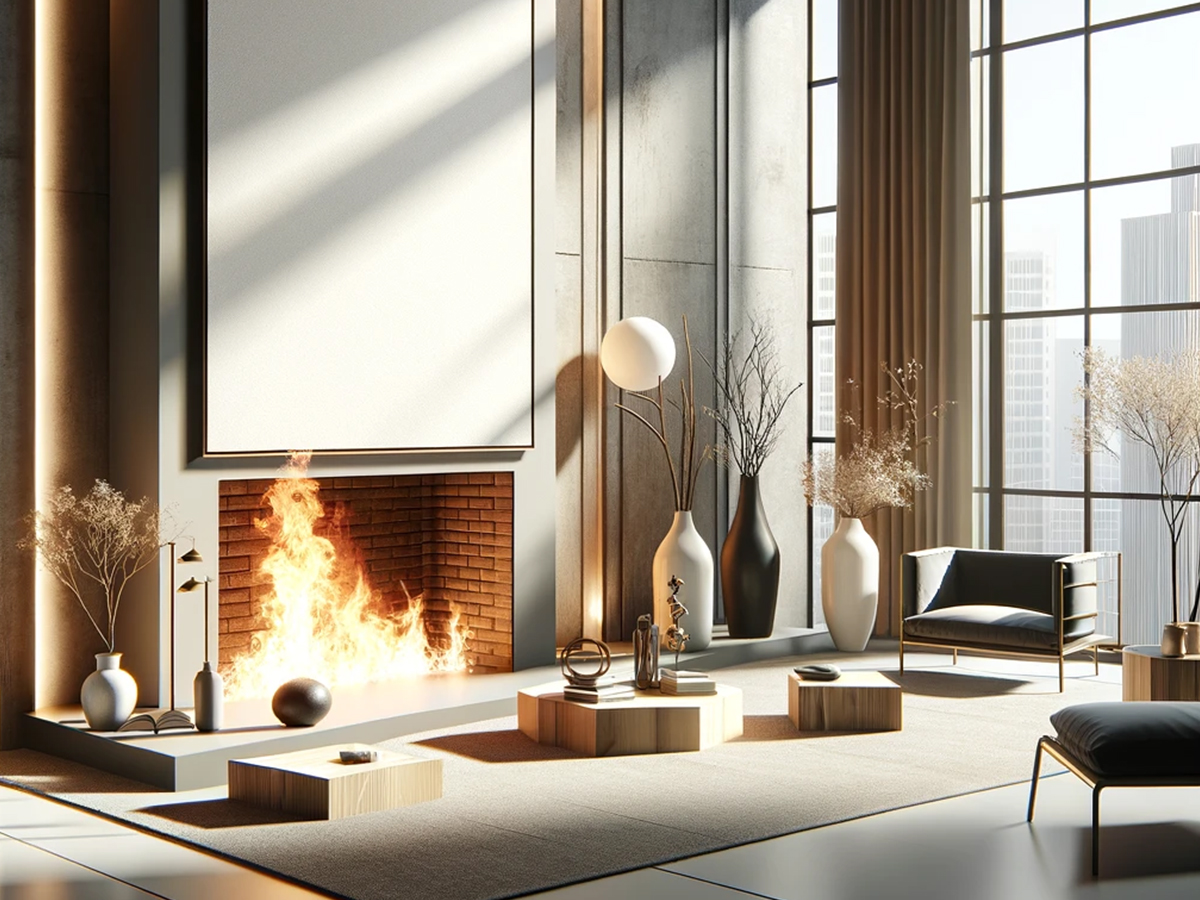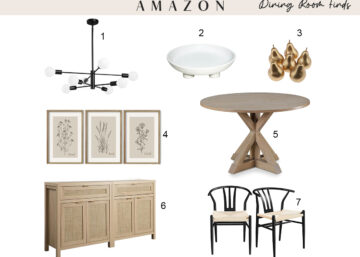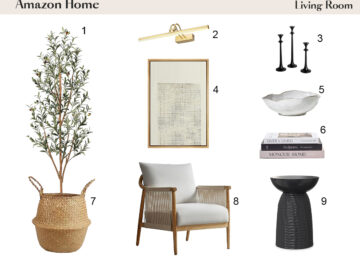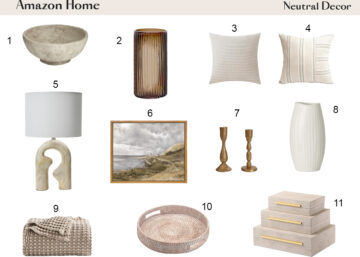The Importance of Focal Points in Room Design
Understanding Focal Points: Basics and Beyond
In the intricate world of interior design, focal points are not just elements of decor but are strategic tools used to direct attention and create meaningful interactions within a space. To harness their full potential, one must first grasp the fundamental principles behind focal points and then explore their varied applications in room design.
Beyond Visual Appeal: Enhancing Functionality through Focal Points
While the visual appeal of focal points is undeniable, their functionality should not be underestimated. In residential design, a focal point can define the use of the room. For instance, a bookshelf filled with vibrant tomes can turn an ordinary wall into a hub of intellectual activity, inviting inhabitants to read, reflect, or engage in quiet study.
In commercial settings, focal points can direct customer traffic or highlight product placements. A colorful mural in a boutique may draw customers deeper into the store, or a central display case can showcase premium products in a retail environment.
The Psychological Nuance of Focal Points
Understanding the psychological effects of focal points can dramatically enhance their effectiveness. A focal point that evokes tranquility, such as a water feature in a spa, can help in setting a calming atmosphere, essential for places meant to offer relaxation. Conversely, vibrant and energetic focal points, such as bold, contemporary art in a fast-paced office environment, can stimulate creativity and dynamism among its occupants.
Mastering the art of focal points involves not only recognizing what can be used as a focal point but also understanding how it can best serve the intended purpose of the space. This deeper knowledge enables designers to create environments that are not only visually stunning but also rich in functionality and appropriate in ambiance.
Strategic Design: Planning with Purpose
Creating a focal point is more than just choosing an eye-catching feature; it involves deliberate planning and strategic design to ensure the chosen focal point effectively serves the intended purpose of the space. For designers and planners at every level, from residential to commercial, understanding how to strategically implement focal points is key to successful interior design.
Incorporating Focal Points in Floor Plans
When drafting floor plans, the placement of a focal point is a critical decision that influences the flow and functionality of the entire space. This placement must consider how individuals will interact with the space, the natural pathways of movement, and how the focal point can best be viewed and appreciated.
Visualizing with Technology
In today’s design landscape, technology plays a pivotal role in planning and visualizing spaces. Tools like 3D rendering provide an invaluable resource, allowing designers and clients alike to see how a focal point fits within the broader context of the room or building design. For instance, a 3D model can demonstrate how natural light from a large window will enhance a living room’s ambiance at different times of the day, or how a central sculpture in a hotel lobby will influence guest movement patterns.
Practical Implementation
When integrating focal points into a floor plan, it’s crucial to consider their practical implications. For example, a fireplace might serve as a natural gathering spot in a residential living room, necessitating ample seating around it. In a commercial setting, a focal point such as a reception desk must be accessible and efficiently positioned to guide visitors naturally into the space.
Balancing Act: Complementing vs. Competing
Achieving harmony in design involves ensuring that the focal point complements rather than competes with other elements of the room. This balance is crucial in maintaining aesthetic coherence and enhancing the overall functionality of the space.
Complementary Strategies
Designers can employ various strategies to ensure that focal points complement their surroundings. Using a consistent color palette, echoing shapes or themes found in the focal point throughout the room, or employing symmetry can subtly emphasize the focal point while maintaining a unified design.
Avoiding Competition
Conversely, it’s important to avoid placing too many commanding elements in close proximity, as this can lead to a cluttered and confusing space. For example, if a bold art piece is the focal point, nearby decor should be more subdued to avoid visual noise. This is particularly important in spaces where clarity and ease of movement are paramount, such as in busy commercial environments or small residential areas.
Case Example: Strategic Focal Point Integration
To illustrate effective focal point integration, consider a case where a designer is tasked with renovating a boutique hotel lobby. The focal point chosen is a large, intricate light installation suspended from the ceiling. This feature not only draws the eye upward, enhancing the perception of space and luxury but also organically directs guests to the check-in counter positioned directly beneath the light. The surrounding decor is kept minimal, with neutral tones and subtle textures to ensure that the light installation remains the star of the space. This strategic placement and complementary design enhance both the aesthetic appeal and the functional flow of the lobby.
Strategic design with focal points, therefore, is not merely about beautification. It is about making calculated decisions that enhance both the utility and the appeal of environments, creating spaces that are not only visually compelling but also highly functional and welcoming. This holistic approach is essential for professionals aiming to make a significant impact in the fields of architecture and interior design.
Case Studies: Focal Points in Action
The strategic use of focal points in interior design can transform an ordinary space into a strikingly memorable and functional environment. Here, we explore how focal points have been effectively implemented in various settings, drawing on real-life examples from both residential and commercial projects. These case studies illustrate the powerful impact of well-executed focal points and provide unique insights into their application.
Residential Design: Enhancing Living Spaces
In the world of residential design, focal points serve to personalize and define spaces, reflecting the lifestyles and tastes of the inhabitants while optimizing spatial use.
The Urban Apartment
Consider a small urban apartment where space is at a premium. Here, the focal point is a custom-built, multifunctional wall unit that spans the length of the main living area. This unit integrates a fold-out desk, shelves for books and collectibles, and a media center. By day, the desk is used for work; by evening, it folds away, and the area becomes a cozy lounge. The unit is highlighted by LED strip lighting, which not only draws attention to the feature itself but also creates an illusion of depth and space, making the apartment appear larger than it is. This solution reflects a seldom-discussed aspect of focal points: their ability to transform the functionality of a space without requiring additional square footage.
The Suburban Family Home
In a larger suburban home, the focal point shifts to a grand fireplace in the living room, surrounded by custom-built bookcases. This not only anchors the room’s decor but also promotes family gatherings. During the design phase, 3D visualization tools were used to experiment with different configurations of the bookcases and fireplace, ensuring the arrangement promoted optimal traffic flow and comfort. This example illustrates how focal points can also enhance the social dynamics of a space, encouraging interactions in family-centric areas.
Commercial Spaces: Driving Business Goals
Focal points in commercial settings often aim to enhance brand identity and customer experience, playing a crucial role in business success.
The Boutique Hotel Lobby
A boutique hotel in a historic city center uses its lobby’s focal point to tell a story and create a unique experience. The focal point, a large vintage map of the city, is illuminated by designer track lighting and flanked by antique suitcases converted into coffee tables. This design choice not only captures the historical essence of the location but also serves as a conversation starter among guests, enhancing their engagement with the space and with each other. This strategic use of a focal point to reinforce brand identity and guest experience shows how businesses can use design elements to support marketing objectives.
The High-End Retail Store
In a high-end retail environment, a central display featuring a rotating exhibit of new arrivals serves as the focal point. Strategically placed at the heart of the store, this display is enhanced by dramatic overhead lighting and is surrounded by minimalist shelving that does not compete for attention. The design ensures that products on the display are the first thing customers see upon entering, drawing them deeper into the store. This setup not only maximizes product visibility but also improves sales by directing customer flow and focus.
Reflecting on the Impact
These case studies underscore a key aspect of design that is often overlooked: the ability of a focal point to serve multiple functions, from improving spatial perception to influencing human behavior and supporting business strategies. Whether in residential or commercial settings, the thoughtful integration of focal points can significantly elevate the aesthetic and functional qualities of a space. For designers and architects, these examples offer a deeper understanding of how focal points can be tailored to meet specific needs and goals, making every project not just visually appealing but also strategically sound and uniquely effective.
Technical Aspects: Tools and Techniques
Incorporating focal points into room design requires not only creativity but also a mastery of various tools and techniques. For designers at Elemental Viz, employing advanced technology and tailored strategies ensures that every design element, particularly focal points, is both visually stunning and perfectly integrated within the intended space.
3D Visualization and Its Advantages
3D visualization technology stands at the forefront of modern interior design, allowing designers and clients to see potential outcomes before physical changes are made. This tool is particularly valuable when working with focal points, as it provides a realistic preview of how these elements will interact with other components of the space.
Real-Time Adjustments
One of the key advantages of 3D rendering is the ability to make real-time adjustments. Designers can experiment with different focal points, adjust their sizes, positions, or even the lighting conditions around them, and immediately see the results. This flexibility is crucial when working to meet the specific needs and preferences of clients, ensuring that the final design is both functional and aesthetically pleasing.
Enhanced Client Communication
Using 3D models helps bridge the communication gap between designers and clients. By presenting a visual representation of how a focal point will appear and function within a space, clients can more easily understand the designer’s vision, leading to quicker approvals and fewer revisions.
Custom Solutions for Unique Spaces
Every space presents its own set of challenges and opportunities, particularly when it comes to integrating effective focal points. Customization is key in ensuring that these elements not only fit the physical space but also align with the client’s vision and the overall design theme.
Tailored Design Approaches
Elemental Viz employs a range of customized design approaches to address the unique aspects of each project. This may involve creating bespoke furniture pieces that serve as focal points while offering functionality, or designing custom lighting schemes that highlight architectural features without overwhelming the space.
Problem-Solving Techniques
In addition to customization, problem-solving is a critical component of integrating focal points. This could mean overcoming spatial limitations by choosing focal points that enhance perceived dimensions, or adjusting color schemes and materials to ensure that the focal point complements both the interior’s aesthetic and its practical usage.
The technical aspect of incorporating focal points involves a combination of advanced visualization tools and customized design tactics. These tools and techniques not only facilitate the design process but also enhance the overall effectiveness of the focal points, ensuring they serve their purpose as both standout features and integral parts of the space’s design. This approach helps Elemental Viz deliver designs that are not only visually compelling but also uniquely suited to each client’s needs.
Conclusion: Focal Points as a Design Imperative
The strategic use of focal points is indispensable in interior design, transforming ordinary spaces into functional and captivating environments. This article has explored various dimensions of focal points—from their psychological impact to their integration using advanced technology—highlighting their importance in both residential and commercial settings. As we conclude, we affirm why understanding and utilizing focal points should be a central strategy for any designer or architect.
Central to Design and Functionality
Focal points are not just decorative elements; they are central to the design and functionality of a space. They guide the arrangement of other elements, influence traffic flow, and impact the spatial dynamics of interiors. For professionals in the design field, the ability to create and manipulate focal points is crucial. It allows them to control the visual narrative of a space and ensures that all other design elements coalesce around a cohesive and engaging theme.
Enhancing User Experience
Whether it’s a living room that feels more inviting due to a beautifully framed view or a hotel lobby whose layout is masterfully oriented around a striking art piece, focal points significantly enhance the user experience. They create memorable impressions and make spaces not only more aesthetically pleasing but also more functional and intuitive.
A Must for Professionals
For design professionals—whether architects, interior designers, or real estate developers—mastering the art of focal points is not optional; it’s essential. This mastery enables them to deliver more than just design; they deliver experiences, create value, and inspire emotions. Focal points offer a unique opportunity to showcase creativity and innovation, making a space not only functional but also a reflection of artistic expression.
Driving Business Success
In commercial settings, effectively utilized focal points can translate into business success. They attract and retain customer attention, enhance brand identity, and can be pivotal in differentiating from competitors. In residential designs, they add value by enhancing the livability and appeal of the home, influencing buying decisions and property valuations.
In conclusion, focal points are much more than elements of visual interest; they are fundamental tools in the strategic design toolkit. By carefully planning and implementing these focal elements, designers at Elemental Viz and beyond can elevate their projects from ordinary to extraordinary, ensuring that each space is not only seen but also felt and experienced. This approach not only fulfills the aesthetic and functional requirements of any design project but also ensures that each design speaks uniquely to its intended audience, making focal points a true design imperative.








